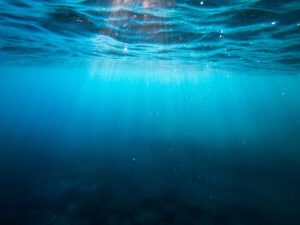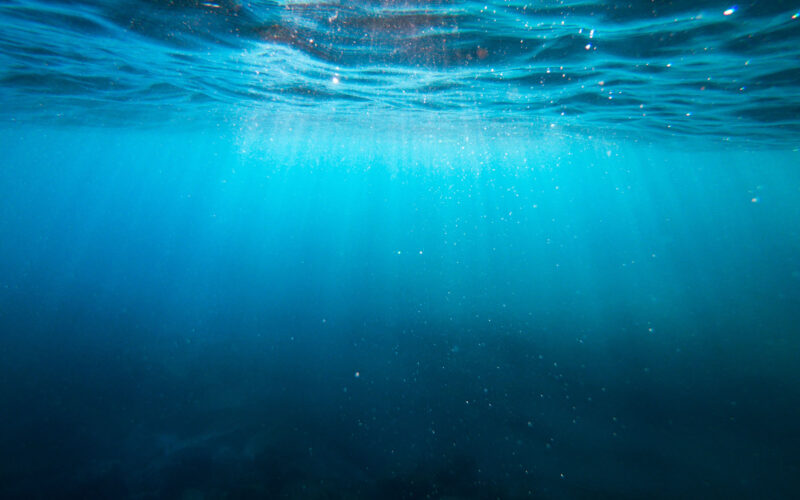By Neil Henderson, senior executive and industry liaison at Gard
(LONDON) — In recent decades it has become recognized that the high seas contain some of the planet’s most precious ecosystems. These ecosystems have been adversely impacted by different human activities, including shipping, through the cumulative effects of events such as ship strikes, ship noise, emissions, chemical pollution and the spread of invasive species.
While the U.N. Convention on the Law of the Sea established a general obligation on member states to protect the marine environment and cooperate to that end, there has long been consensus that there were various gaps in its provisions. The High Seas Treaty seeks to fill those gaps and put in place a framework for the protection of our oceans and the equitable sharing of their resources.
Late in the evening in New York on March 4, after a marathon 36-hour final negotiation session, Rena Lee, the conference chair, announced that agreement had been reached on The Conservation and Sustainable Use of Marine Biodiversity of Areas Beyond National Jurisdiction (BBNJ) Treaty. The High Seas Treaty, as the BBNJ is alternatively referred to, is a legally binding instrument under the U.N. Convention on the Law of the Sea (UNCLOS). It provides a strong overall policy framework for the oceans, which to date have suffered from a siloed approach to ocean management and significant underfunding. It is hoped by many that the BBNJ will act as a central authority and play an efficient coordinating role.
History
Much like its grueling finalization, the BBNJ has a long history. It started in 2004 when the U.N. General Assembly established an ad hoc open-ended informal working group to study conservation and sustainable use of marine biological diversity in areas beyond national jurisdiction. In 2015, it established a preparatory committee which resulted in a recommendation to progress a legally binding instrument. In 2017, an intergovernmental conference was formed to commence development of the BBNJ. Five such conferences took place, the second being in two parts before the text of the BBNJ was finalized. Formal adoption is likely to be towards the end of 2023.

Although UNCLOS was adopted in 1982, it did not come into force until 1994. It has now been ratified by 167 states and the European Union. The United States is not a signatory. But non-signatories are bound by many of the provisions of UNCLOS as they are now generally accepted as reflecting customary international law, to which all states must adhere. Although the BBNJ is derivative of UNCLOS, signatories of UNCLOS are not automatically bound by the BBNJ. Instead, it must be ratified by 60 U.N. member states before it can enter into force. A state can ratify the BBNJ without being a party to UNCLOS.
Main principles
The BBNJ applies to those areas of the oceans that lie outside of any nation’s exclusive economic zone (EEZ). EEZs extend 200 nautical miles (about 370 kilometers) from the shore.
There are two overarching (and potentially competing) principles to the treaty:
• The first is the freedom of the seas. This is a long-standing principle that underlies UNCLOS (Article 87) by which any ship, regardless of its flag, is allowed to navigate the oceans freely and to fish, explore, conduct scientific research and other peaceful activities.
• The second is the common heritage of humankind. It provides that states bear a legal responsibility to act in the common interests of all humanity to protect and preserve biodiversity outside their national waters and not out of individual national or economic self-interest.
The general objective of the BBNJ is to ensure the conservation and sustainable use of marine biological diversity of areas beyond national jurisdiction, for the present and in the long term, through effective implementation of the relevant provisions of UNCLOS and further international cooperation and coordination. It also provides a link between climate change law and the law of the sea.
The other key principles underlying the treaty include:
• The polluter pays principle, whereby responsibility is on polluters to manage and bear the costs of their pollution.
• Fair and equitable benefit-sharing from marine genetic resources and digital sequence information.
• The precautionary principle, by which states should not let the lack of scientific certainty hold them back from responding to threats of serious, irreversible damage to the high seas.
• An ecosystem and integrated approach to ocean management, together with the building of the resilience, maintenance and restoration of ecosystem integrity.
• The use of knowledge from indigenous peoples, and local communities, and the protection of their rights.
Main provisions and themes
The need for the BBNJ was driven by perceived ‘gaps’ in the coverage of UNCLOS. Those gaps now comprise the following main provisions/themes of the treaty:
• Collection and sharing of marine genetic resources. There is agreement to develop a multilateral benefit-sharing mechanism for marine genetic resources and digital sequence information, including a global fund. It imposes robust notification requirements prior to the collection, use, and commercialization of genetic resources. But there is still ambiguity around who should pay and how monetary and non-monetary benefits will be distributed.
• Area-based management tools. These are the main structures for protection of the marine environment in areas beyond national boundaries. But this is to be balanced with food security and other socioeconomic objectives, including protection of cultural values. These measures include marine protected areas which previously had no clear establishment mechanism under UNCLOS although it established a general obligation to protect the marine environment and cooperate to that end.
• Environmental impact assessments. These enable the review of environmentally harmful and polluting projects both outside and inside of national boundaries where the projects may cause substantial pollution/significant or harmful changes to the marine environment in areas beyond national jurisdiction, meaning that the treaty’s standards might impact existing national processes. Environmental impact assessments must consider “cumulative impacts,” which include the “consequences of climate change, ocean acidification and related impacts.” Such impact assessments may be skipped where the project has already been sufficiently assessed in accordance with standards equivalent to the BBNJ.
• Capacity-building and technology transfer. The stated purpose is to support developing states in developing marine scientific and technological capacity, and to achieve the objectives laid out in the marine genetic resources, area-based management tools and environmental impact assessments sections.
Relevance of the BBNJ to marine and offshore insurers
At this stage the BBNJ is of limited immediate relevance to marine and offshore insurers, but that should not stop thought being given to its future impact on their members and clients.
The establishment of marine protected areas will result in greater environmental protections within those areas, including substance and noise pollution. Vessels may be required to avoid such areas, resulting in less direct sea passages, to steam at slower speeds, or will be subject to other restrictions when passing through them. They may give rise to different approaches to salvage when casualties occur in these areas, and to more extensive remedial cleanup activities. Likewise, installations operating within these areas will have to comply with the regulations.
It may be that penalties will be introduced for breaches of these protections, although the jurisdictional basis and enforcement mechanism for issuing and enforcing penalties is not currently apparent. It is unclear whether existing limitation of liability conventions will apply in these areas. Consideration will need to be given to the education of members/clients on associated new regulations. There will also be the reputational risk associated with significant incidents.
The BBNJ introduces the obligation on states to consider undertaking environmental impact assessments in two instances: for projects within national jurisdiction that may cause substantial pollution of or significant and harmful changes to the marine environment in areas beyond national jurisdiction; and also projects within such areas that are under the jurisdiction or control of member states.
There is currently ambiguity as to the meaning of the phrase “under the jurisdiction or control.”It is not defined in the BBNJ, but during negotiations delegations understood this to cover activities such as those taking place in a state’s national territory and activities beyond national jurisdiction by ships flying their flags. Environmental impact assessments are likely to be required for offshore energy projects (whether fossil fuels or renewables), deep-sea mining, and submarine cable-laying projects.
Whilst the BBNJ is not yet in force, and is unlikely to be for several years, its ratification will fill some important gaps in UNCLOS. States that have significant interest in resources beyond their EEZ, for example the United States, my choose to ratify the treaty without having already ratified UNCLOS. In the meantime, the fact that the negotiating states agreed to include both the principle of the common heritage of mankind and the ecosystem method to ocean management offers some hope for a more cooperative and equitable approach to our oceans.

